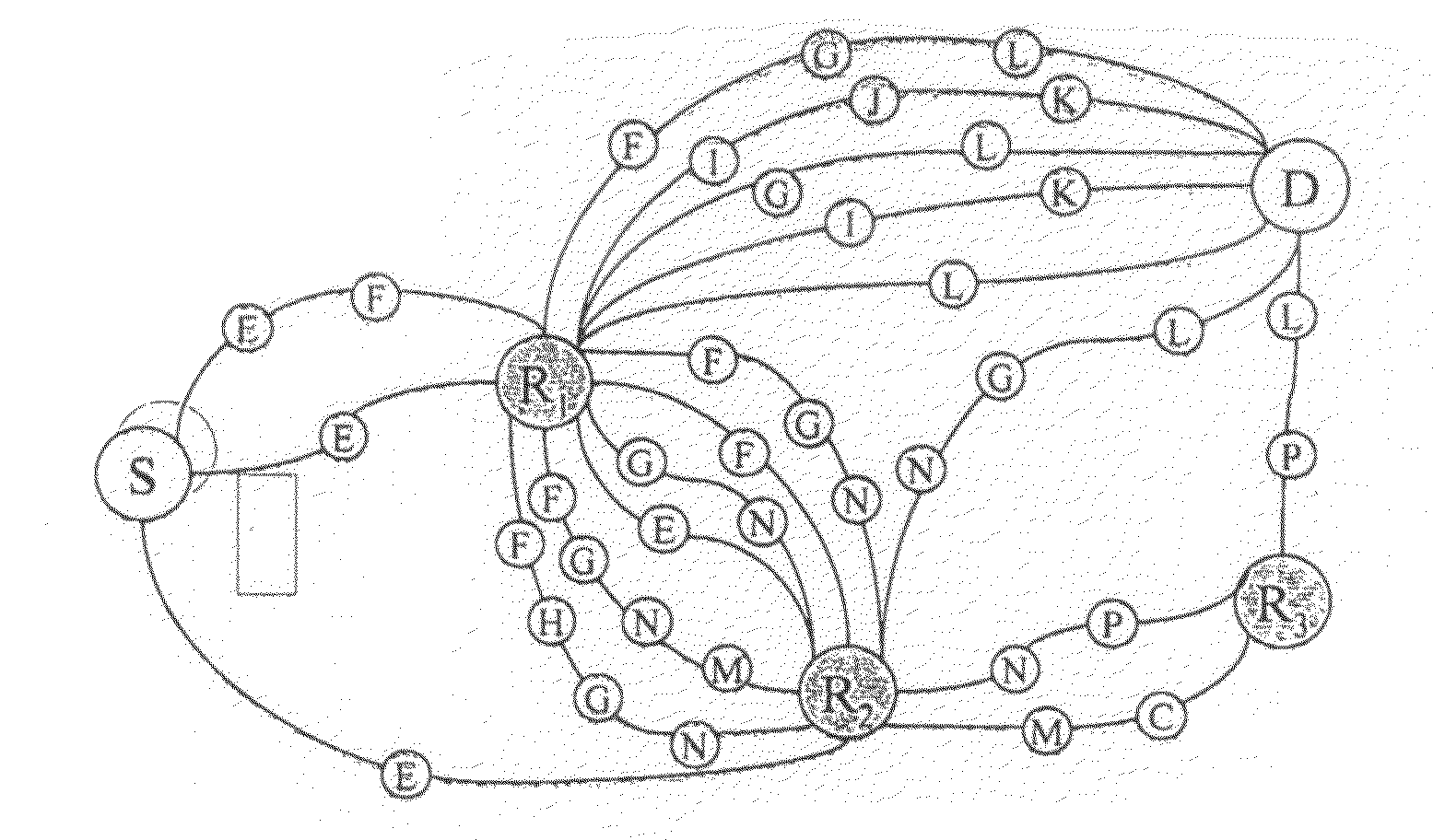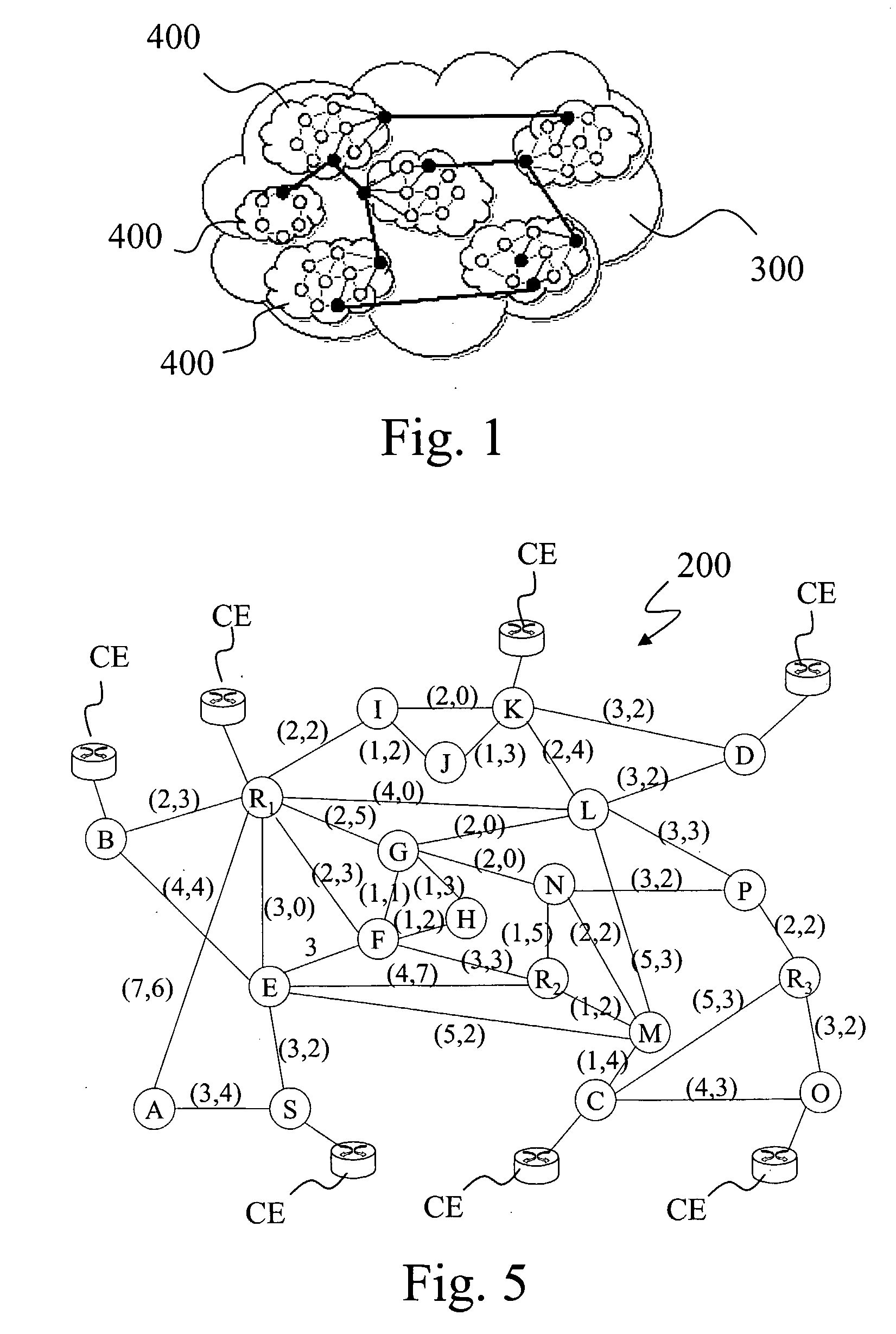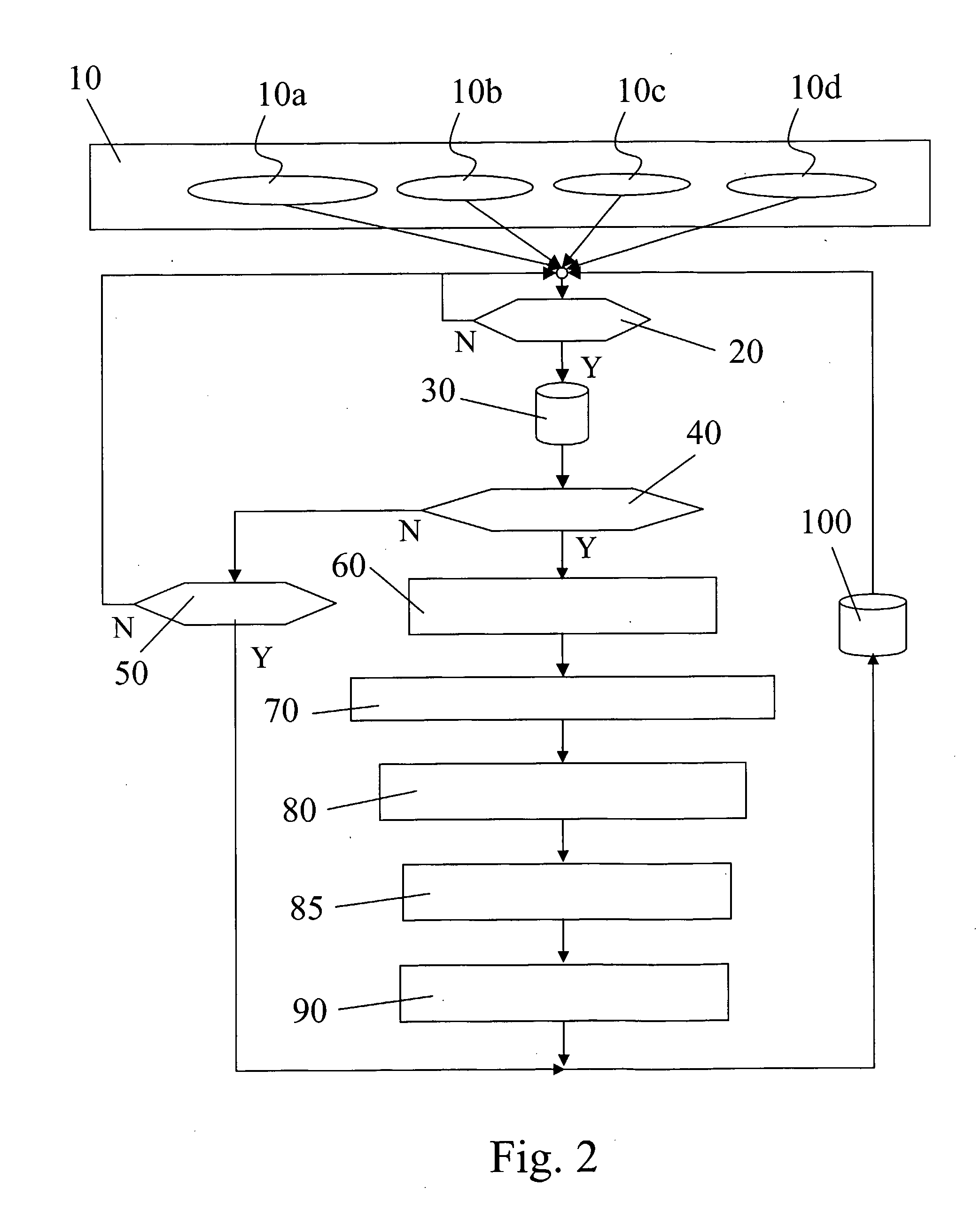Optimized Dynamic Routing in a network, in particular in an optical telecommunication network
a dynamic routing and optical telecommunication technology, applied in the field of dynamic routing in the network, can solve the problems of high block probability in congested networks, inability to adapt to transparent networks, and inability to reduce costs so effectively, so as to achieve the lowest run-through cost, the effect of reducing the cost of operation and reducing the cos
- Summary
- Abstract
- Description
- Claims
- Application Information
AI Technical Summary
Benefits of technology
Problems solved by technology
Method used
Image
Examples
Embodiment Construction
[0072]The following discussion is presented to enable a person skilled in the art to make and use the invention. Various modifications to the embodiments will be readily apparent to those skilled in the art, and the generic principles herein may be applied to other embodiments and applications without departing from the spirit and scope of the present invention. Thus, the present invention is not intended to be limited to the embodiments shown, but is to be accorded the widest scope consistent with the principles and features disclosed herein and defined in the attached claims.
[0073]The dynamic routing according to the present invention will now be described with reference to an arbitrary translucent network of the type shown in FIG. 5, i.e. a translucent network 200 based on at least two different network nodes. Preferably the two types of nodes are the following:[0074]signal regenerating nodes, or “opaque” nodes, depicted in FIG. 5 as grey circles, and designated by the letter R; ...
PUM
 Login to View More
Login to View More Abstract
Description
Claims
Application Information
 Login to View More
Login to View More - R&D
- Intellectual Property
- Life Sciences
- Materials
- Tech Scout
- Unparalleled Data Quality
- Higher Quality Content
- 60% Fewer Hallucinations
Browse by: Latest US Patents, China's latest patents, Technical Efficacy Thesaurus, Application Domain, Technology Topic, Popular Technical Reports.
© 2025 PatSnap. All rights reserved.Legal|Privacy policy|Modern Slavery Act Transparency Statement|Sitemap|About US| Contact US: help@patsnap.com



